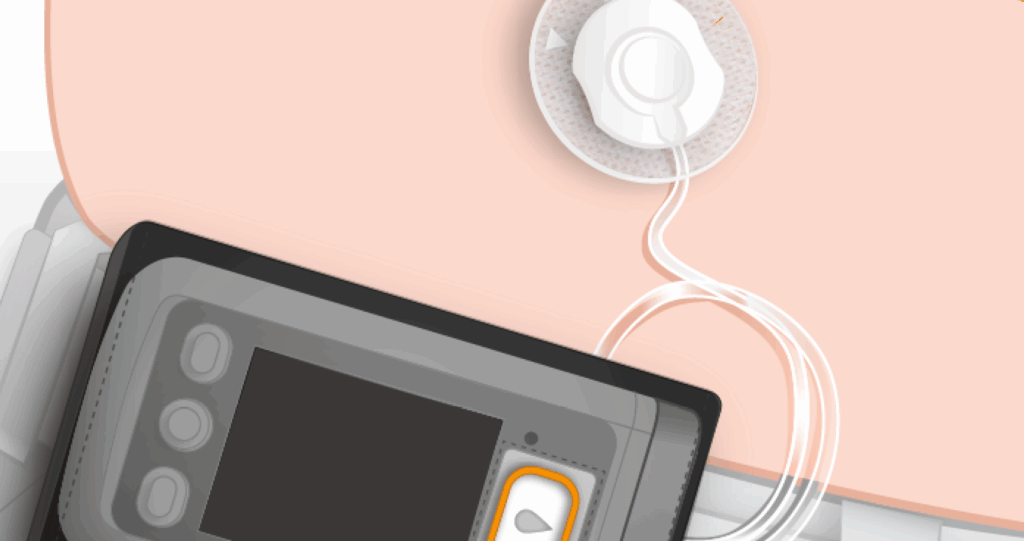
The correct injection site for subcutaneous apomorphine therapy
Continuous apomorphine therapy is a proven treatment for the relief of motor and non-motor symptoms in Parkinson’s patients from the middle stages of this progressive disease onwards, when adequate symptom control with oral medication alone is no longer satisfactory. It provides continuous dopaminergic stimulation and can be administered subcutaneously using a pump. A key element for the efficacy and tolerability of this therapy is the correct selection and handling of the injection site. Here I would like to provide my tip for subcutaneous Apomorphine injection or infusion:
Why the right injection site is crucial
Continuous subcutaneous apomorphine therapy requires regular infusion of the medication via an infusion line, which is inserted into the subcutaneous fat using a short, very fine needle. If the injection site is not carefully chosen or frequently reused, local irritation, hardening, inflammation or nodule formation may occur. These complications may be completely harmless or manifest as itching, pain, redness, swelling and warmth. These complications can not only be uncomfortable but also impair medication absorption.
Criteria for a suitable injection site
The choice of puncture site should meet the following criteria:
👉 Areas with sufficient subcutaneous fat are ideal. This is usually found on the abdomen, thighs or flanks. Basically, you can choose any location where a loose fold of skin can be taken between the thumb and index finger. For example, this also applies to the underside of the upper arms.
👉 Only inject in intact skin. The needle should not be injected into reddened or hardened skin areas, bruises or open wounds. Punctures should also be avoided in scar tissue, moles or in sunburned skin.
👉 Varying puncture sites. By changing the puncture sites daily, the risk of local irritation can be significantly reduced. However, I recommend not only changing the puncture site daily, but also changing the area over a large area, with a distance of 5cm. For example, if the abdomen was punctured yesterday, it is better to choose the flank today. To facilitate the selection of puncture sites, it is useful to document the selected puncture sites or to use so-called “rotation scheme diary.”
👉 What about convenient handling? Many patients are able to handle their apomorphine pump independently and do not require external assistance. However, this is limited to easily accessible areas, such as the abdomen or thighs. But if this skin area is too damaged after a certain time and repeated injections, and alternative locations like the back or between the shoulder blades are difficult to reach on their own, assistance from a caregiver should be considered, who can then insert the needle in alternative locations.
Different types of infusion lines
Another tip for subcutaneous Apomorphine injection or infusion is the right choice of the infusion line. There are two key differences in infusion line needle material and therefore in choosing the right one:
– steel needles, e.g
D-mine® Infset and
– Teflon needles, e.g. Neria Guard, Cleo 90 or Orbit Soft. Steel needles are usually used as the standard. Teflon needle is often used alternatively, e.g. if there is an intolerance to the steel needle or if there are legitimate problems with inserting or removing the steel needle.
When choosing an infusion set, you should also consider the correct needle length. These come in different sizes. Teflon infusion sets are more commonly available in 6 mm or 9 mm lengths. Infusion sets with a steel needle are often available in 8 mm or 10 mm lengths. Short needles are more suitable for relatively slim individuals with little fatty tissue. Slightly longer needles are suitable for people of normal build or those with slightly more fatty tissue. It is important that the needle tip penetrates the subcutaneous fat.
It’s important that the infusion set has a sufficiently long tube. I recommend 80 cm. It also has a Luer-Lock connector so that it fits the D-mine® Pump.
Tips for puncture practice
👉 Always use a sterile, fresh infusion line every day and ensure hygienic preparation. This includes disinfecting your hands and skin at the chosen puncture site.
👉Always use an infusion line with a 90-degree angle so that it can be inserted vertically into the skin.
👉 I particularly recommend shaving hairy areas of the body before injection. This ensures better adhesion of the infusion set patch and less painful removal afterward.
👉To prevent the needle from accidentally slipping out, which may sometimes happen due to snagging or hyperkinesia, the infusion set tube should be fixed to the skin with a loose loop and a plaster.
👉 To avoid skin irritation, also ensure a dry puncture. This means injecting with a dry needle whose tip is not moistened with medication.
👉 For a daytime treatment, one infusion line is usually sufficient. Some patients also use the therapy overnight. For longer treatment times, the needle should be changed again before going to bed.
👉 Systematically rotate between the puncture sites (e.g. using a rotation plan or skin pattern). Remember: There should be 5 cm of space between two adjacent puncture sites.
👉 Monitor the skin regularly for reactions or hardening. Some reactions only occur during the infusion or even the next day.
👉 Document any skin changes and, if necessary, inform your attending physician or, even better, your Parkinson’s nurse. Nurses are highly trained in skin care and can give you many other tips.
Tip for subcutaneous Apomorphine injection or infusion: removing the infusion set
I can also give you some good advice on removing the needle:
👉 Make sure you pull the needle out carefully and vertically. Avoid pulling it out too roughly. This could lead to micro-injuries. I have seen cases where this has resulted in necrosis, which then requires a long healing process.
👉 Sometimes it’s difficult to remove the infusion line from the skin in the evening because the adhesive on the patch sticks so tightly. A quick tip: Try placing a damp or wet washcloth on the infusion set patch for a few minutes. The moisture softens the adhesive slightly, making the patch easier to remove from the skin. In stubborn cases, you can also use a so-called patch removal spray.
👉 After removing the needle, gently squeeze the former infusion site with a dry cloth. Sometimes some of the medication will come out again. This is absolutely not a problem. It minimizes the appearance of a skin lump.
👉 Afterward, massage with a rich moisturizing ointment or oil, preferably in combination with a massage ball, is beneficial.
My conclusion
Proper selection and care of the injection site is a fundamental component of successful apomorphine therapy. It contributes to skin health, patient comfort and continuous drug absorption. With careful handling, treatment can be successful and well-tolerated in the long term. I hope there was a tip for subcutaneous Apomorphine injection or infusion which is helping you in your daily practice!
Links:
👉https://www.d-minecare.com/wp-content/uploads/2022/05/DAC_Skincareinstructions.pdf
